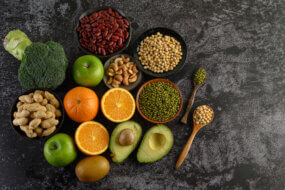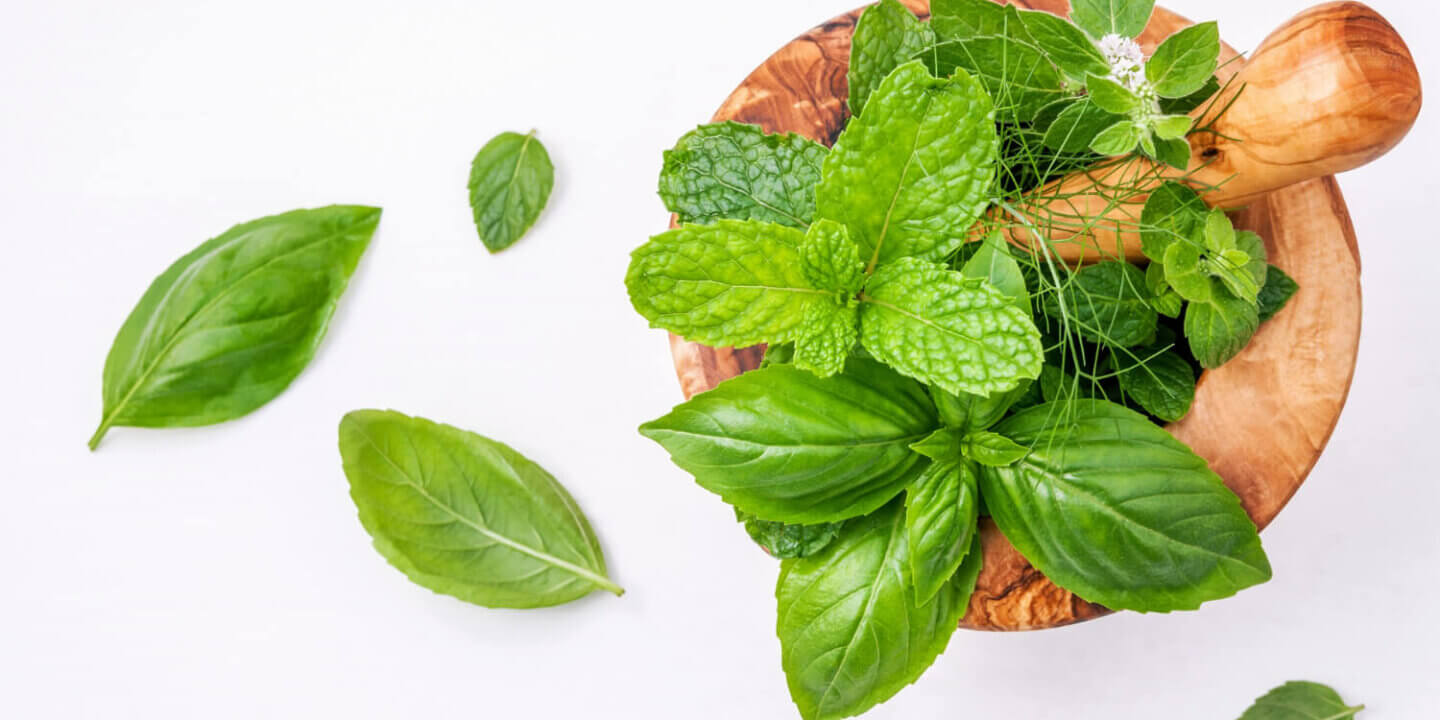
The whole world is struggling with good health and try to save them from this COVID-19 virus. Here your food plays a major role. Nutritional and healthy food is more important nowadays and Nutritious Herbs can fulfill all your nutritional requirements.
Here we have picked a top 5 Nutritious Herbs to start eating today.
1. Alfalfa
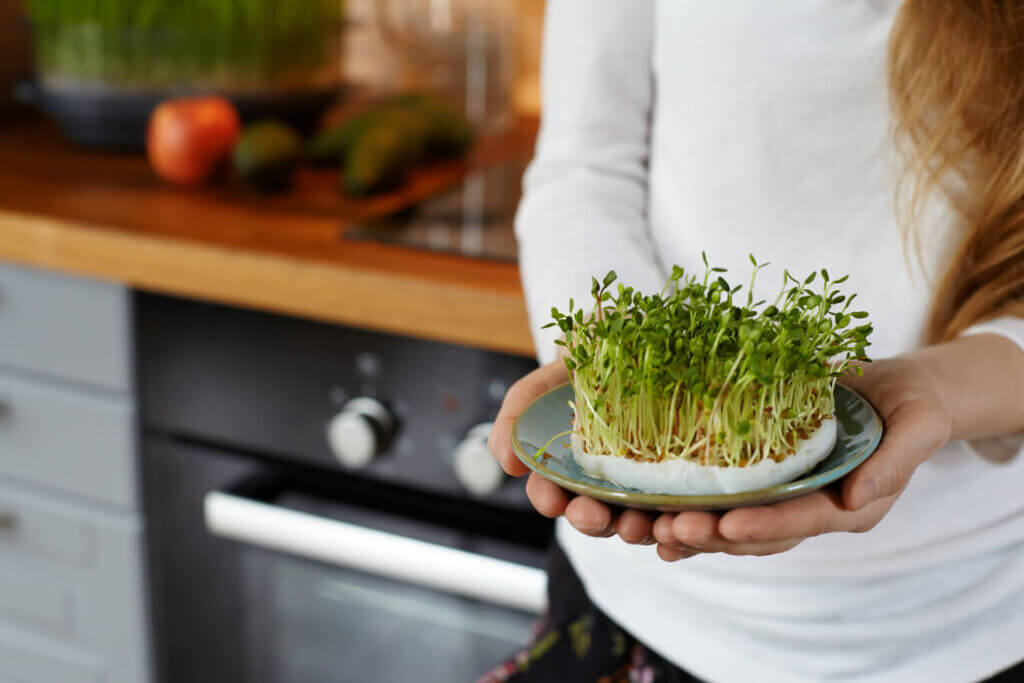
Alfalfa, a perennial herb, has a lengthy list of culinary and therapeutic purposes, and research has shown that it may lower blood cholesterol and glucose levels. Many individuals use Alfalfa supplements orally, and it has been shown to be safe except in a small percentage of persons who develop lupus-like symptoms. This reaction is considered to be caused by the amino acid L-canavanine, which is found in Alfalfa seeds and sprouts. This, however, is not present in Alfalfa leaves. The Alfalfa plant is used to produce the complete leaf and the herb.
Alfalfa has been utilised by the Chinese to treat fluid retention and swelling since the sixth century. The Arabs were the first to discover Alfalfa, which they dubbed “the father of all foods.” The Alfalfa plant’s leaves are high in minerals and nutrients such as potassium, calcium, magnesium, and carotene. The Arabs fed it to their horses originally because they believed it made them quick and powerful. Alfalfa has been used as a livestock feed for over a thousand years, but it is also utilised as a herbal remedy.
Alfalfa is both a diuretic and a laxative. It is also effective for urinary tract infections, kidney, bladder, and prostate problems. The most recent and exciting discovery of Alfalfa is the potential benefits it may have for decreasing cholesterol. This is due to the presence of specific agents in Alfalfa that bind to cholesterol, preventing it from lingering in the bloodstream. Furthermore, it may have a strong association with reducing blood sugar levels.
Many people enjoy Alfalfa in their cooking. It goes well in salads and some people eat it as a vegetable on its own. Many individuals believe that eating Alfalfa is an important element of eating well. Alfalfa, along with wheatgrass and algae, has the highest nutritional value. It is high in fiber, vitamins and minerals, and contains all of the digestive enzymes required.
Avid Alfalfa fans warn that you will most likely loathe the way it feels in your mouth, that it may feel like it is burning the tip of your tongue, and that you will eventually come to appreciate it. However, they encourage you not to give up because it is an acquired taste and you will come to like it. The best part is that after a few weeks of eating it regularly, you will notice a decrease in your hunger for heavier foods.
Alfalfa is also effective at lowering fevers and is beneficial to the circulatory system. It includes natural fluoride, which helps to prevent tooth decay. Alfalfa makes an excellent tea since it is a source of nitrogen when the Alfalfa leaves steep in hot water. People who cultivate Irises and Delphiniums adore Alfalfa tea as a foliar spray since it has such a positive effect on the plants. Many people with a green thumb use Alfalfa as mulch in their flower beds.
2. Basil
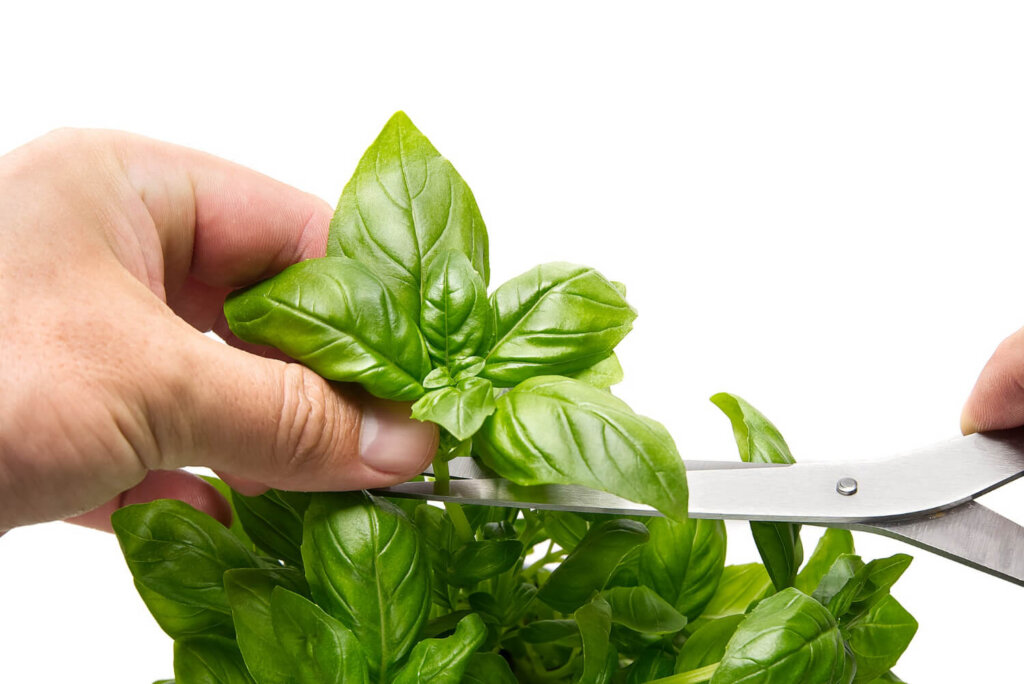
Basil was not always the most popular herb in the garden. Actually, some people, primarily the ancients, despised it. Despite the fact that the name basil means “to be fragrant,” diverse civilizations have a love-hate relationship with basil. It was popular among Americans and Romans, and Hindus planted it in their houses as a symbol of happiness. On the contrary, it was the Greeks who detested it the most, although it was also disliked by people from India and Persia. Basil was particularly popular in Italy, and to this day, few people cook a classic pasta sauce without it.
To this day, basil and tomato sauce have nearly universally established a sort of marriage. Basil is a relatively simple plant to grow as long as the temperature does not go below 50 degrees Fahrenheit and it receives enough of sunlight. It is widely used in both fresh and dried form. A little-known secret about basil is that the longer it simmers in a recipe, the more intense the taste becomes. This explains why people boil their pasta sauces for so long in order to bring out all of the rich herb flavours. Typically, basil is combined with oregano in pasta sauces. Basil, on the other hand, is not only used to flavour pasta or tomato sauce; it is also used to flavour fish, vegetables, meats, and soups.
If you opt to establish a herb garden, you may thank the Basil plants for keeping flies away, as flies are also among those who dislike Basil. Another fascinating truth about basil is that it was once considered a royal herb with a strong link with love. Basil had an affinity with how men of a bygone era intended to propose to their pretty maidens. The guy would bring a basil branch, and if the woman accepted his gift, she silently promised to love and remain faithful to him for all eternity.
Basil is connected to the mint family, which should give you a decent sense of how many therapeutic uses it will have. Most people immediately identify mint with improving the digestive tract and having anti-gas qualities. Herbalists frequently use Basil to treat stomach cramps, vomiting, constipation, migraines, and anxiety. When basil is utilised for these purposes, it is usually prepared into a hot tea that is consumed. Some people believe that a nice hot cup of Basil tea will help you sleep better. If you don’t like the taste of the tea, you can get Basil capsules at a herbal store.
Basil is still one of the most frequent home herbs used today, and it is also a necessary in most areas of culinary art. Basil is taken from the plant and minced with a knife when it is at its freshest. Usually, you’ll find some olive oil, garlic, and someone preparing a delicious tomato sauce next the Basil.
3. Belladonna
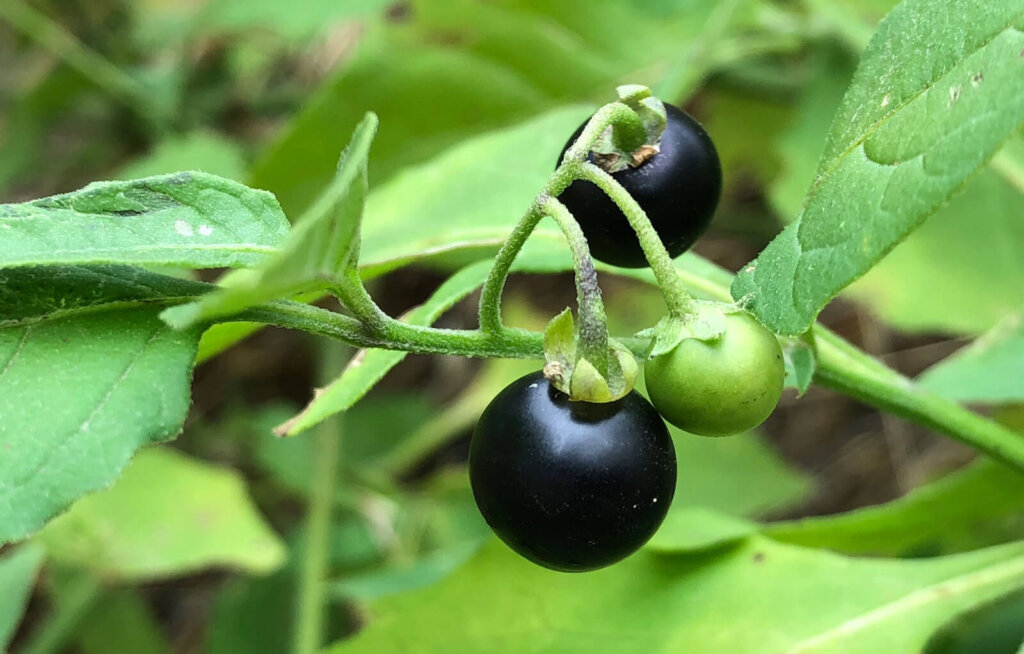
Belladonna is not a herb you want to have in your cupboard. While it has its advantages, this is a herb that may be extremely hazardous and even fatal. It has some medical benefits and a fascinating history, yet it may be extremely hazardous. The moniker “deadly nightshade” gives an excellent indication of its potency. However, there is a tincture made from this plant that is used for therapeutic purposes. Belladonna is a perennial herb native to Europe and Asia Minor, although it is now widely grown in the United States, Europe, and India. When the plant has fully bloomed, it is collected and dried for use.
Belladonna’s most important contribution is atropine, an essential chemical that is effective in dilating the pupils of the eye. This has shown to be really advantageous. Even low doses of atropine can produce an increase in heart rate. Some cough syrups containing atropine are used to treat bronchitis and whooping cough. It is also used to relax the stomach lining prior to anesthesia administration and to treat peptic ulcers.
Belladonna is known by a variety of names and has been used for over 500 years. A small quantity of belladonna, which grows naturally in the wild, can be lethal. Belladonna was first utilised for cosmetic purposes when it was discovered. Women believed that by dilapidating their pupils, they would appear more seductive and alluring. As a result, the name Belladonna translates to “beautiful lady” in Italian. Nonetheless, it is still utilised in many eye physicians’ offices around the country.
Belladonna also has the capacity to dry out biological fluids such as breast milk, saliva, perspiration, and mucus, which is useful for what it is used for today. Belladonna alkaloids are used to treat a variety of illnesses, including gastrointestinal disorders such as colitis, diverticulitis, irritable bowel syndrome, colic, diarrhoea, and peptic ulcer. It can also help with asthma, excessive perspiration, overnight urine and incontinence, headaches and migraines, muscle cramps and spasms, motion sickness, Parkinson’s disease, and biliary colic.
Belladonna is frequently used as a homeopathic remedy for common colds, earaches, fever, menstrual cramps, sunstroke, toothaches, headaches, sore throats, and boils. A variety of factors, including the patient’s symptoms, mood, and overall temperament, influence how and how much they ingest. Because of its toxicity, Belladonna is considerably diluted when supplied for homoeopathic use.
Belladonna should never be used as a self-help measure, and it should only be used under the supervision of a skilled doctor. Belladonna is always administered in extremely low amounts. Belladonna is only available by prescription and is either added to sugar pellets or blended with other sorts of medications. So, while it is obvious that Belladonna is a hazardous herb, it is also incredibly beneficial when used correctly.
4. Cilantro
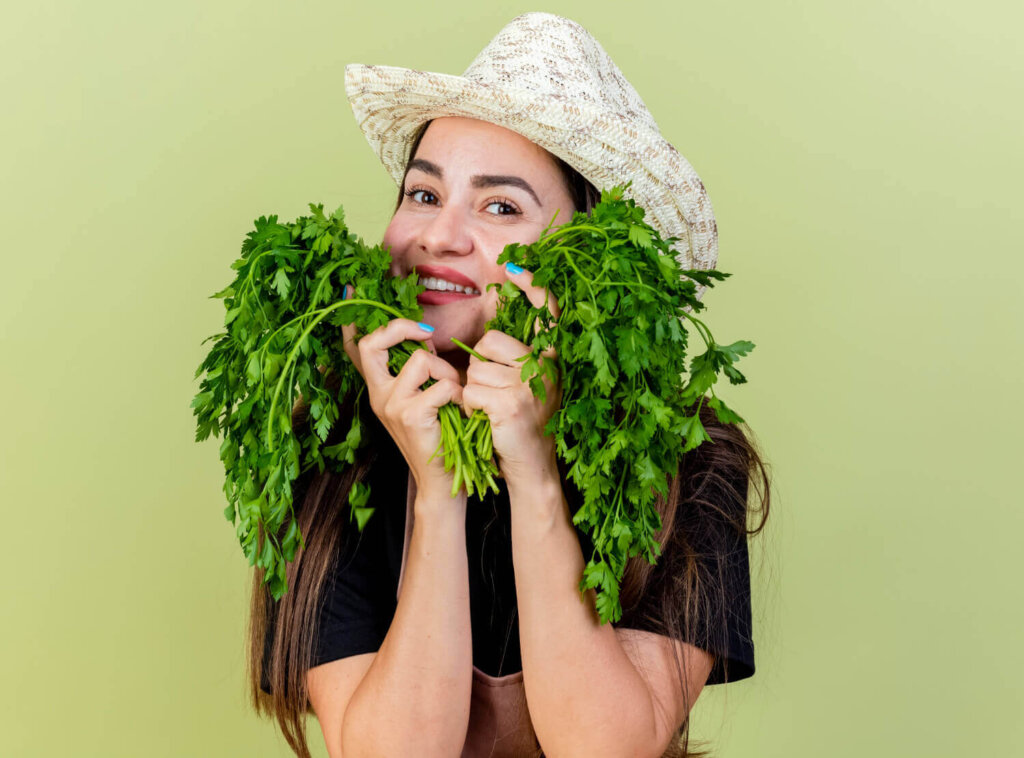
Cilantro is a fast-growing herb that can be planted almost anyplace. It is a carrot family member that is also known as Chinese parsley and Coriander. Cilantro is made up of the Coriander plant’s leaves and stalks.
It has a distinct odour and is commonly used in Mexican, Asian, and Caribbean cuisine. Cilantro looks a lot like parsley, which is not surprising given that the two are related. Cilantro has been around for thousands of years, first in Egypt, India, and China, and later in Mexico and Peru, where it is currently utilised with chiles while producing excellent cuisine dishes. It has since gained popularity in various sections of the United States. Cilantro is no longer popular in Europe since most Europeans dislike the scent of it.
Cilantro is a Greek term that meaning “koris,” which translates to “bedbug” in English, which is ironic because many people believe Cilantro smells like a bedbug. The Chinese did not appear to object because Cilantro is used in numerous love potions because it represents immortality and has aphrodisiac effects. Many people believe it is also an appetite stimulant. Cilantro may be found at almost any local grocery store or fruit market at any time of year.
Cilantro has a rich history and has appeared numerous times throughout history. Keep in mind that cilantro contains Coriander, and some seeds were discovered in King Tut’s tomb. It is also mentioned in the Old Testament and has been utilised by medics since Hippocrates. Cilantro was utilised by the Ancient Egyptians to treat headaches and urinary tract infections.
Cilantro can also be used to conceal the odour of rotting flesh, and it was widely utilised in ancient cultures for this reason. Cilantro is a herbal plant with two identities, as Cilantro is what the plant is called in its early stages and Coriander when it is completely developed. Cilantro grows swiftly but also dies quickly, thus it is best grown in a pot on your windowsill. Cilantro is ideally harvested before it bolts or blooms. If you wait too long to harvest Cilantro, you will end with picking Coriander since it will be all seed.
Cilantro can now be obtained practically anyplace in the United States and is used as a garnish on nearly every plate served in an upscale restaurant. The strange thing about cilantro is that most people either love it or despise it; there is generally no in-between.
Those who dislike it remark that it has a soapy taste, while those who love it claim that Cilantro has a strong flavour but that they prefer its pungency. Cilantro is sold fresh, and if you find it dried, don’t spend your time with it because drying it causes it to lose all of its flavour.
5. Dandelion

The dandelion is a herbaceous plant that is more than simply a weed in your yard. For all intents and purposes, the Dandelion leaves are at their best right as they emerge from the ground, and they are highly distinct because nothing else looks like them. The bitterness of Dandelion leaves varies depending on when they are harvested, yet it is a pleasing bitterness.
These herb-like leaves go well with salads and can be cooked either sautéed or steamed. Many people say the flavour is comparable to endive. People who believe in eating the fruits of nature argue that eating the Dandelion blossom is also totally appropriate. Some report that if battered and fried, they make excellent fritters and provide a colourful element to any stir fry.
Dandelions leaves are truly incredibly healthy, far more so than any herb available in supermarkets. They contain more beta-carotene than carrots and more iron, calcium, and iron than spinach. Dandelion leaves also include B-1, B-2, B-5, B-6, B-12, C, E, P, D, biotin, inositol, potassium, phosphorus, magnesium, and zinc. Dandelion root is one of the most popular and safe herbal treatments on the market, and it is widely utilised today.
It can traditionally be prepared into a tonic that is recognised for strengthening the entire body, particularly the liver and gallbladder since it encourages bile flow. Dandelion root includes taraxacin, which lowers bile duct irritation and gallstone formation. It’s frequently used to treat Hepatitis, liver edoema, and jaundice. It also aids in digestion.
This plant is also known as Pissenlit in French. Ironically, when prepared into tea from the leaves or the root, it has the ability to operate as a diuretic on the kidneys. Over-the-counter diuretics have a propensity to pull potassium from the body, while Dandelion leaves do not. Some people have avoided surgery for urinary stones by drinking dandelion root tea. Dandelions are generally beneficial to one’s overall health and well-being, thus almost everyone could benefit from a cup of dandelion tea. Many herbalists believe that incorporating the Dandelion plant into each night’s dinner will aid with digestion.
When you break the stem of a Dandelion plant, you will find a milky white fluid inside. This product is excellent for eradicating warts, pimples, moles, calluses, and relieving bee stings and blisters. Other uses for Dandelion include preparing Dandelion jam and using it as a coffee substitute when roasted and powdered Dandelion root. Dandelion wine is also popular.
Today, Europeans utilise a lot of Dandelion roots to manufacture herbal treatments and find it strange that Americans call this incredibly helpful plant a weed because it has so many benefits for the liver, spleen, kidneys, bladder, and stomach.




